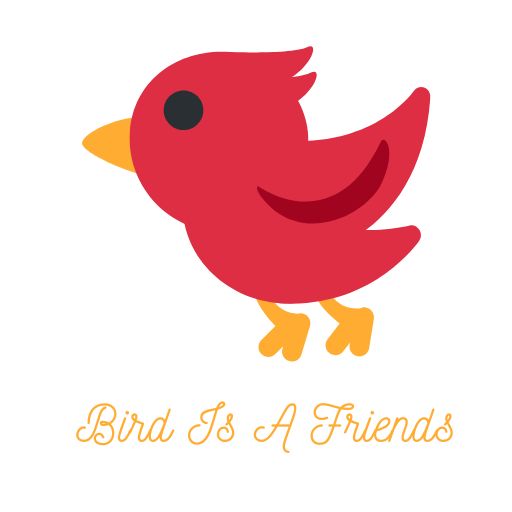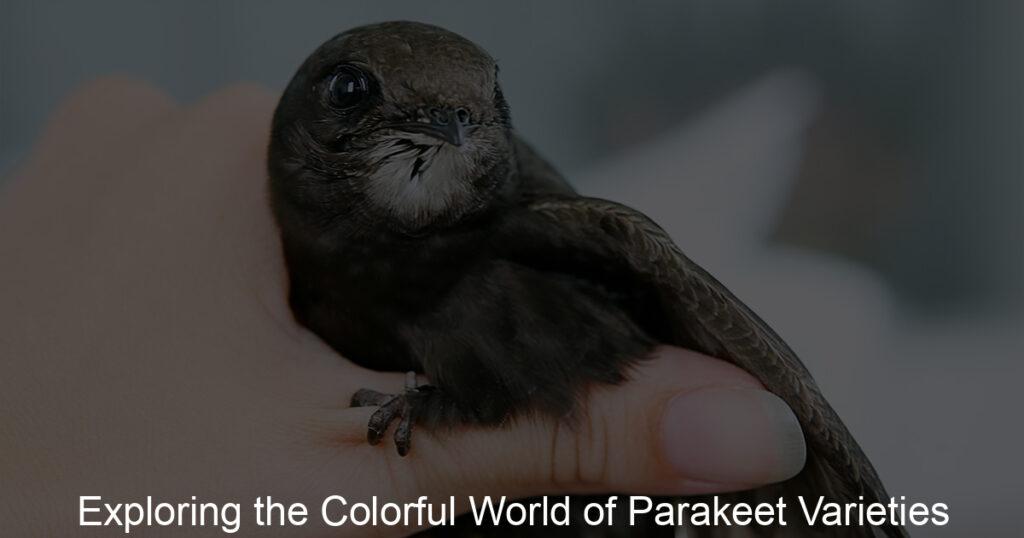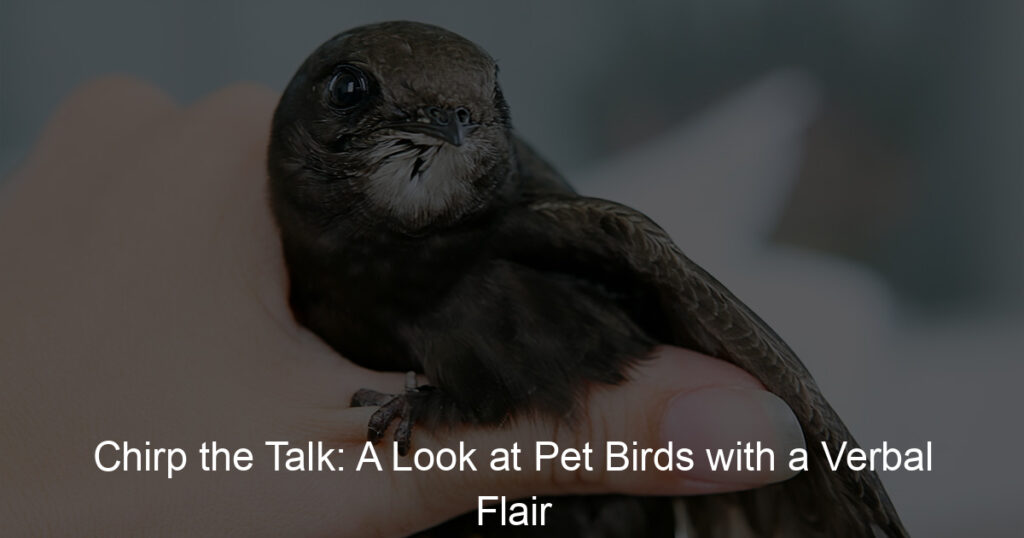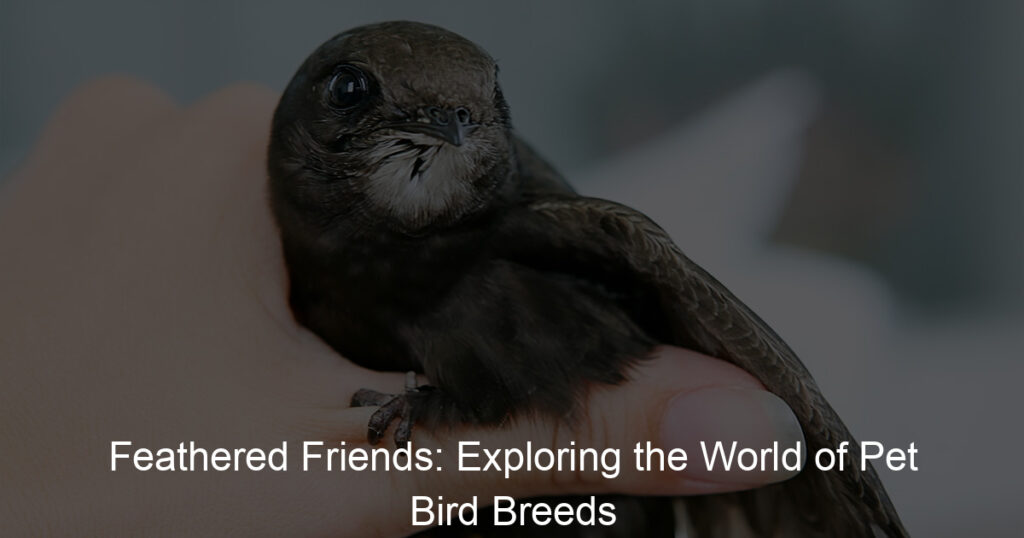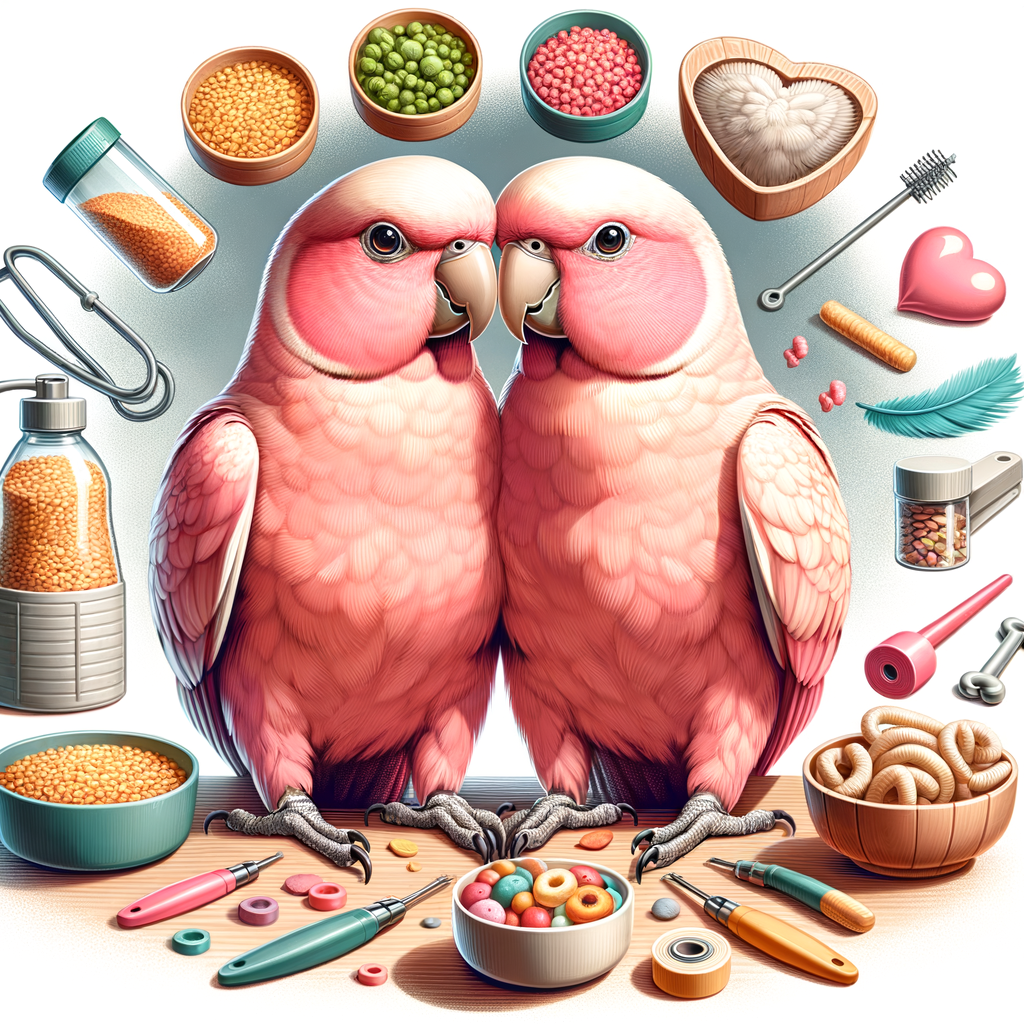
Introduction to Pink Parakeets: Charming Companions
Parakeets, also known as budgies, are small, colorful birds that are loved by many. Among the various types of parakeets, the Pink Parakeets stand out due to their unique color and charming personality. In this section, we will delve into what Pink Parakeets are and why they make great pets.
- What are Pink Parakeets?
- Why Pink Parakeets make great pets?
Pink Parakeets are a variety of the parakeet species, known for their vibrant pink feathers. They are small birds, typically measuring between 18 to 20 centimeters in length. These birds are native to Australia, but they have been domesticated and are now found in homes across the world. Pink Parakeets are known for their playful nature and their ability to mimic human speech, which makes them a popular choice for pet owners.
There are several reasons why Pink Parakeets make great pets. First, they are relatively easy to care for. They require a balanced diet of seeds, fruits, and vegetables, and they need a clean cage with plenty of toys to keep them entertained. Second, Pink Parakeets are sociable birds. They enjoy interacting with their human companions and can even learn to mimic their voices. Lastly, their vibrant pink color and charming personality can bring joy and color to any home.
In the following sections, we will explore more about the behavior, care, breeding, and health care of Pink Parakeets. By the end of this post, you will have a comprehensive understanding of these charming companions and why they make such great pets.
Pink Parakeet Behavior
Understanding the behavior of Pink Parakeets is crucial to ensure a healthy and happy environment for these charming companions. Let’s delve into the world of Pink Parakeets and learn about their common behaviors and how to interpret their sounds.
Understanding Pink Parakeet Behavior
Like any other pet, Pink Parakeets have their unique ways of communicating. They display a range of behaviors that can tell us a lot about their mood, health, and overall well-being. Let’s explore some of the common behaviors of Pink Parakeets and their meanings.
- Chirping and Singing: Pink Parakeets are known for their melodious chirping and singing. This is a sign of a happy and content bird. If your Pink Parakeet is singing, it means it is comfortable in its environment.
- Preening: Preening is a common behavior where the bird cleans its feathers. This is a sign of a healthy and well-groomed bird.
- Fluffing Feathers: If your Pink Parakeet fluffs its feathers, it could be a sign of relaxation or an attempt to regulate its body temperature.
- Beak Grinding: Beak grinding is a sign of contentment and relaxation. It is usually done before the bird goes to sleep.
Now that we understand some common behaviors, let’s learn how to interpret the sounds made by Pink Parakeets.
- Chirping: As mentioned earlier, chirping is a sign of a happy bird. If the chirping becomes louder or more frequent, it could be a sign of excitement or attention-seeking.
- Squawking: Squawking is a louder, harsher sound. It could indicate distress, fear, or a demand for attention.
- Chattering: Chattering is a series of quick, soft sounds. It could indicate curiosity, excitement, or a desire to communicate.
Understanding these behaviors and sounds will help you better communicate with your Pink Parakeet and ensure its well-being.
Interacting with Your Pink Parakeet
Building a bond with your pink parakeet can be a rewarding experience. It requires patience, understanding, and a gentle approach. Here are some key steps to help you interact effectively with your pet.
- How to Approach Your Pink Parakeet
- Teaching Your Pink Parakeet to Trust You
Approaching your pink parakeet in a calm and non-threatening manner is crucial. Birds are naturally wary creatures, so sudden movements or loud noises can scare them. When approaching, move slowly and speak in a soft, soothing voice. Avoid direct eye contact as birds can interpret this as a threat. Instead, keep your gaze slightly off to the side. Remember, it’s important to respect their space and not to force interaction.
Building trust with your parakeet takes time and consistency. Start by spending time near their cage, talking softly to them. This helps them get used to your presence and voice. Once they seem comfortable, you can begin hand-feeding them treats. This positive reinforcement helps them associate you with good things. Over time, your parakeet will learn to trust you and may even start to seek out your company.
Remember, every bird is unique and will respond differently to interaction. Some may take longer to trust, while others may be more outgoing. The key is to be patient and persistent, and to always treat your pink parakeet with kindness and respect.
Pink Parakeet Care
When it comes to caring for your Pink Parakeet, understanding their dietary needs is crucial. Let’s delve into the details of what and how often to feed your feathered friend.
Parakeet Diet
A balanced diet is key to keeping your Pink Parakeet healthy and happy. Here are some guidelines to help you provide the best nutrition for your pet.
- What to feed your Pink Parakeet
- How often to feed your Pink Parakeet
Pink Parakeets, like other parakeets, are primarily granivores, which means they eat seeds and grains. However, a diet solely based on seeds can lead to nutritional deficiencies. It’s important to supplement their diet with a variety of fresh fruits and vegetables. Apples, bananas, and leafy greens are great choices. Additionally, you can also include high-quality bird pellets in their diet. Remember to always provide fresh water for your parakeet.
Feeding your Pink Parakeet twice a day is generally recommended. A morning feed and an evening feed, each consisting of a small portion of seeds or pellets along with some fresh fruits or vegetables, should suffice. However, the exact feeding schedule may vary depending on your parakeet’s age, health, and activity level. Always monitor your parakeet’s eating habits and adjust the feeding schedule and portion sizes as needed.
Remember, a well-fed parakeet is a happy parakeet. By providing a balanced diet, you’re not just feeding your pet, you’re nourishing their health and well-being.
Parakeet Habitat
Creating a comfortable and safe environment is essential for the well-being of your Pink Parakeet. Let’s explore how you can make your parakeet’s habitat a perfect home.
- Creating a comfortable environment for your Pink Parakeet
- Ensure the cage is spacious enough for your parakeet to move around comfortably. A cage with a size of 18x18x18 inches is generally suitable for a single parakeet.
- Place the cage in a quiet, well-lit area, away from direct sunlight and drafts.
- Keep the cage temperature between 65 and 80 degrees Fahrenheit. Parakeets are sensitive to temperature changes.
- Provide perches of varying diameters to help your parakeet exercise its feet.
- Essential items for your Pink Parakeet’s cage
- Food and Water Dishes: These should be sturdy and easy to clean. Consider dishes that attach to the cage to prevent tipping.
- Perches: As mentioned earlier, perches of different sizes are essential for your parakeet’s foot health.
- Toys: Parakeets are intelligent and active birds. Toys will keep them entertained and mentally stimulated.
- Cuttlebone or Mineral Block: These provide your parakeet with necessary calcium and help keep its beak trimmed.
Your Pink Parakeet’s environment should be a place where it can feel safe and happy. Here are some tips:
Equipping your parakeet’s cage with essential items will make it feel more at home. Here are some items you should consider:
In conclusion, creating a comfortable habitat for your Pink Parakeet involves providing a spacious cage, maintaining a suitable temperature, and equipping the cage with essential items. Remember, a happy parakeet is a healthy parakeet.
Parakeet Training
Training your Pink Parakeet is a rewarding experience. It not only strengthens the bond between you and your feathered friend but also stimulates their mental health. Here, we will focus on two key training aspects: teaching your parakeet to step up and to talk.
-
Training your Pink Parakeet to Step Up
The ‘step up’ command is one of the most basic and essential skills you can teach your Pink Parakeet. It’s the foundation for all other training and a great way to build trust with your bird.
Start by placing your finger near your parakeet’s lower chest, just above the feet. Use a gentle voice to say “step up”. Be patient, it may take a few tries before your parakeet understands what you want. Remember to reward your parakeet with a treat or praise when they step up onto your finger. This positive reinforcement will encourage them to repeat the behavior.
-
Teaching your Pink Parakeet to Talk
Parakeets are known for their ability to mimic human speech. Teaching your Pink Parakeet to talk can be a fun and interactive process. Here are a few tips to get you started:
- Start Simple: Begin with short, simple words. Parakeets are more likely to pick up one or two syllable words.
- Repeat: Consistency is key. Repeat the word or phrase you want your parakeet to learn multiple times a day.
- Positive Reinforcement: Always reward your parakeet when they mimic the word or phrase correctly. This could be with a treat or simply praise.
Remember, every parakeet is unique. Some may start talking quickly, while others may take more time. The most important thing is to make the process enjoyable for both you and your Pink Parakeet.
In conclusion, training your Pink Parakeet can be a fun and rewarding experience. With patience, consistency, and positive reinforcement, you’ll be amazed at what your feathered friend can achieve.
Pink Parakeet Breeding
Breeding Pink Parakeets is a rewarding experience that requires careful planning and attention. Let’s delve into the details of when and how to breed these beautiful birds and how to care for their chicks.
- When and how to breed Pink Parakeets
- Caring for Pink Parakeet chicks
Pink Parakeets, like most parakeets, are ready to breed when they reach about one year old. To encourage breeding, provide a comfortable nesting box in their cage. It’s important to ensure that the birds are healthy, well-fed, and comfortable in their environment. A balanced diet rich in fruits, vegetables, and high-quality birdseed is essential.
When the female is ready to lay eggs, she will spend more time in the nesting box. After laying eggs, it takes about 18 to 20 days for them to hatch. During this period, the male parakeet will often feed the female and protect the nest.
Once the chicks hatch, they require a lot of care. The parents will feed the chicks for the first few weeks. As a bird owner, your role is to ensure that the parents have plenty of nutritious food to feed their young.
After about a month, the chicks will start to leave the nest and explore their surroundings. This is a critical time to monitor their health and safety. It’s also the perfect time to start socializing the chicks. Handle them gently and speak to them softly to help them get used to human interaction.
In conclusion, breeding Pink Parakeets is a process that requires patience and dedication. With the right care and attention, you can help these beautiful birds thrive and enjoy their company for many years to come.
Parakeet Health Care
As a Pink Parakeet owner, it’s important to know how to keep your feathered friend healthy and happy. In this section, we will discuss some common health issues in Pink Parakeets and how to recognize signs of illness. We will also provide guidance on when you should take your Pink Parakeet to the vet.
Common Health Issues in Pink Parakeets
Pink Parakeets, like any other pet, can experience a variety of health issues. Some of the most common ones include respiratory problems, digestive issues, and feather plucking. It’s important to keep a close eye on your Pink Parakeet’s behavior and appearance to catch any potential health issues early.
- Recognizing signs of illness
- When to take your Pink Parakeet to the vet
There are several signs that your Pink Parakeet may be unwell. These include changes in eating or drinking habits, lethargy, difficulty breathing, and changes in droppings. If your parakeet’s feathers look ruffled or it’s losing feathers, this could also be a sign of illness. Remember, early detection is key to successful treatment.
If you notice any of the signs of illness mentioned above, it’s important to take your Pink Parakeet to the vet as soon as possible. Even if you’re not sure, it’s better to be safe than sorry. Regular check-ups are also a good idea to catch any potential issues early.
Remember, your Pink Parakeet relies on you for its health and well-being. By staying informed and vigilant, you can ensure your feathered friend lives a long, happy life.
Preventative Care for Pink Parakeets
Preventative care is a vital part of ensuring your Pink Parakeet stays healthy and happy. By taking proactive steps, you can help prevent many common health issues that can affect your feathered friend. Let’s explore some of the key preventative measures you should consider.
- Regular Check-ups for Your Pink Parakeet
- Vaccinations and Other Preventative Measures
Just like humans, Pink Parakeets benefit from regular health check-ups. These visits to the vet can help identify any potential health issues early, before they become serious. A typical check-up may include a physical examination, weight check, and various tests to assess your bird’s overall health. It’s recommended to have your Pink Parakeet checked at least once a year.
Vaccinations are another crucial part of preventative care for Pink Parakeets. They help protect your bird from various diseases that can be harmful or even fatal. Your vet can guide you on the appropriate vaccination schedule based on your bird’s age, health status, and lifestyle. Other preventative measures include maintaining a clean and safe living environment, providing a balanced diet, and ensuring your bird gets plenty of exercise and mental stimulation.
Remember, preventative care is not just about preventing illness, but also about promoting a high quality of life for your Pink Parakeet. By taking these steps, you can help ensure your bird lives a long, healthy, and happy life.
| Preventative Measure | Benefits |
|---|---|
| Regular Check-ups | Early detection of potential health issues, monitoring of weight and overall health |
| Vaccinations | Protection against various diseases |
| Clean and Safe Environment | Prevention of infections and injuries |
| Balanced Diet | Provision of essential nutrients, prevention of dietary-related health issues |
| Exercise and Mental Stimulation | Enhancement of physical health and mental well-being |
Conclusion: Pink Parakeets as Lifelong Companions
As we conclude our exploration of the delightful world of Pink Parakeets, we can confidently affirm that these charming creatures make excellent lifelong companions. Their vibrant colors, engaging behaviors, and unique personalities make them a joy to have around. But, as with any pet, owning a Pink Parakeet comes with responsibilities. Let’s summarize the key points of our discussion.
- The joy of Pink Parakeet companionship
- Commitment to your Pink Parakeet’s well-being
There’s no denying the joy that Pink Parakeets bring to our lives. Their lively antics, endearing chirps, and the splash of color they add to our homes are just a few of the many reasons why they are loved as pets. Studies have shown that owning a pet bird can reduce stress and improve mood, making Pink Parakeets not just a source of entertainment, but also a positive influence on our mental health.
As a Pink Parakeet owner, your commitment to their well-being is crucial. This includes providing a balanced diet, ensuring their living conditions are clean and safe, and scheduling regular vet check-ups. Remember, a healthy parakeet is a happy parakeet. Your commitment to their well-being will be rewarded with their cheerful presence for many years to come.
In conclusion, Pink Parakeets are more than just pets. They are our companions, our confidants, and a source of endless joy. As we’ve learned, they require our care and commitment, but the rewards are well worth it. So, if you’re ready for a lifelong companion that will bring color, joy, and a touch of the wild into your home, a Pink Parakeet might just be the perfect choice for you.
